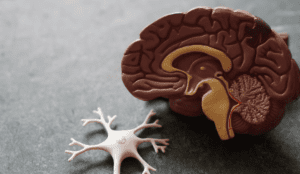In the realm of scientific exploration, the pursuit of knowledge is paramount. However, as we journey deeper into the secrets of the universe, it’s essential to remember that science isn’t just about uncovering facts—it’s also about understanding the ethical implications of those discoveries. By dissecting the ethical dimensions of good and bad science, we can gain clarity on how to apply this knowledge responsibly in our daily lives.
Good science is characterized by its adherence to a specific set of principles: integrity, rigor, transparency, and repeatability. Researchers who abide by these values ensure that their work stands up to scrutiny, can be verified by others, and contributes to the advancement of knowledge.
Notably, good science is respectful of all life forms involved in research. For instance, in biomedical studies, ethical guidelines mandate the humane treatment of lab animals. This humane approach extends beyond just the treatment of subjects. It includes an awareness of the potential implications of the research, such as ensuring that scientific advancements don’t exacerbate social inequalities or harm the environment.
Bad Science: The Shadow Side
Contrastingly, bad science often involves violations of these ethical principles. This may manifest as manipulation of data, biased interpretation of results, or disregard for the welfare of research subjects. For instance, in the infamous Tuskegee Syphilis Study, researchers withheld treatment from African American men suffering from syphilis, leading to unnecessary suffering and death. This example underscores the potential harm of science conducted without ethical consideration.
Bad science can also involve spreading unverified or misconstrued scientific claims, leading to public confusion and mistrust. As mentioned previously, the 1998 controversy surrounding Andrew Wakefield’s now-debunked study linking MMR vaccines to autism is a prime example. Despite the study’s retraction and Wakefield’s discreditation, the resultant vaccine hesitancy has persisted, leading to preventable disease outbreaks.
Living Ethically with Science: The Personal Dimension
Understanding these dimensions of good and bad science has profound implications for our daily lives. We can use this knowledge to make informed decisions about issues ranging from climate change to health care. By recognizing the hallmarks of good science—evidence-based, transparent, and repeatable—we can distinguish between reliable information and sensationalist claims.
Moreover, being conscious of the ethical dimensions of science can guide our behavior as consumers. We can support companies that uphold ethical standards in their scientific research and product development, and avoid those that disregard environmental sustainability or exploit vulnerable populations.
In the end, it’s important to note that good science is about more than facts and figures—it’s about the responsible pursuit of knowledge, in alignment with our shared ethical values. As consumers, learners, and citizens, we have a vital role in promoting good science. Let’s ensure that our decisions are not just informed by science, but also by an awareness of the ethical dimensions of scientific research and its applications.






